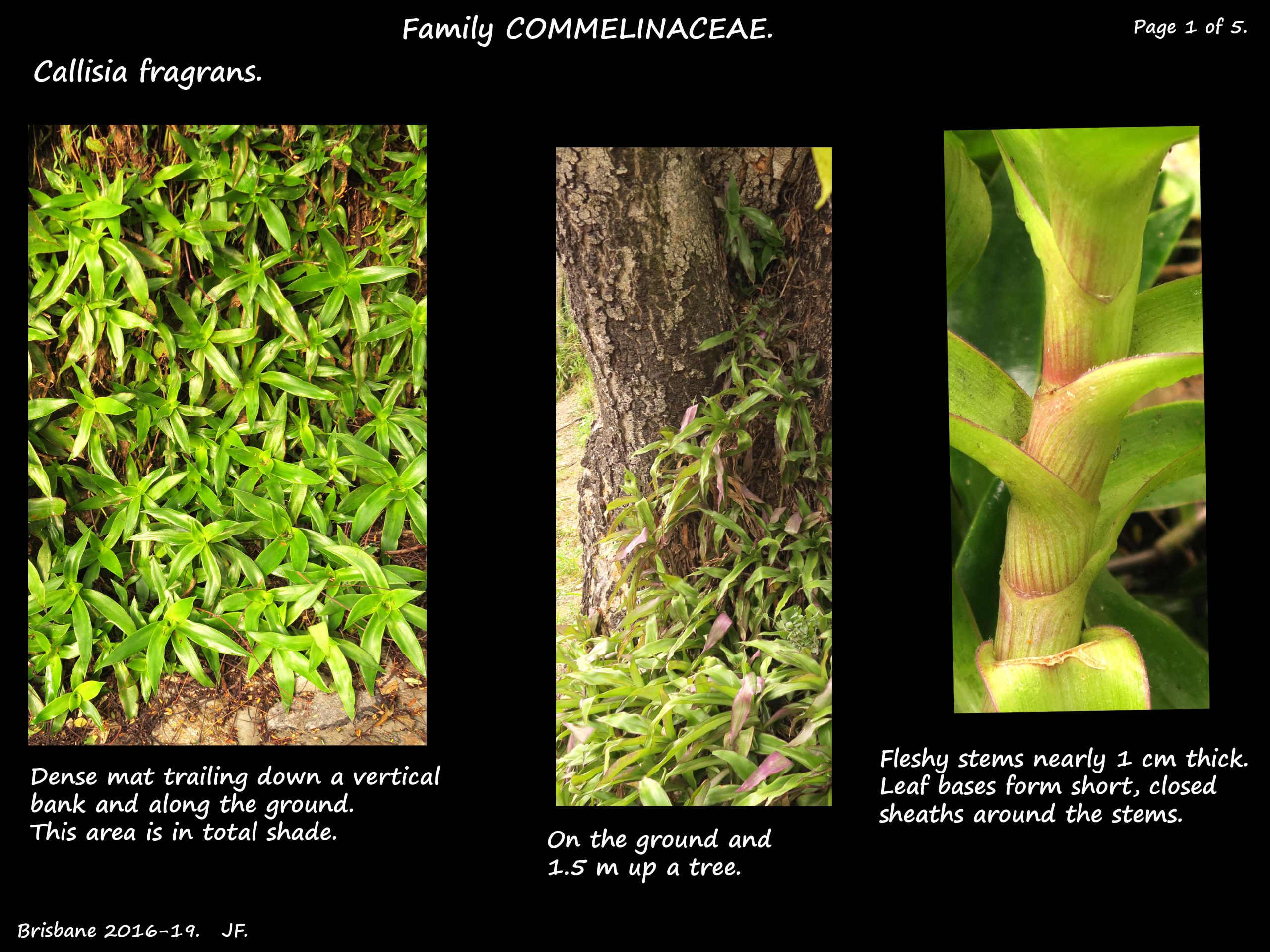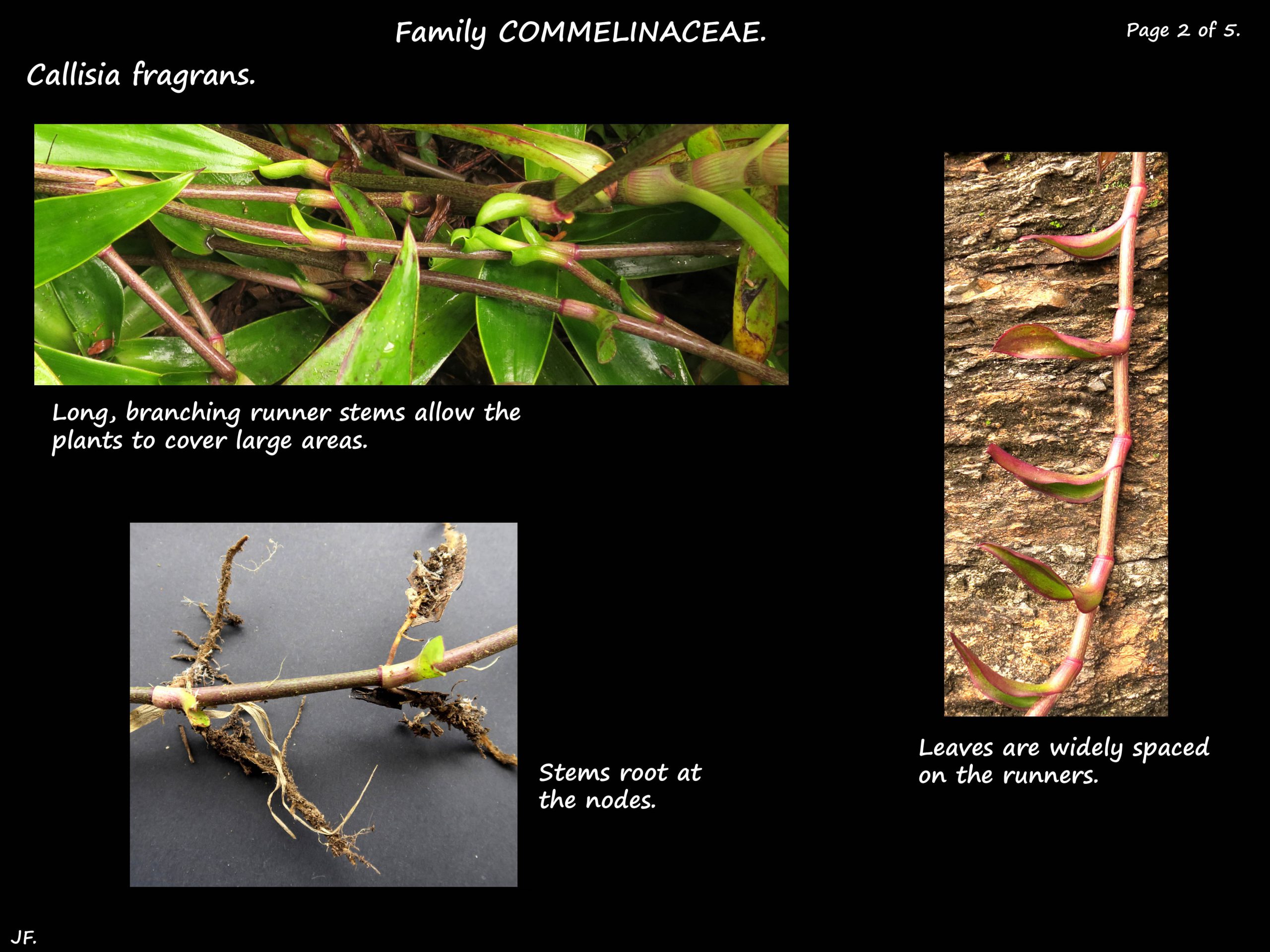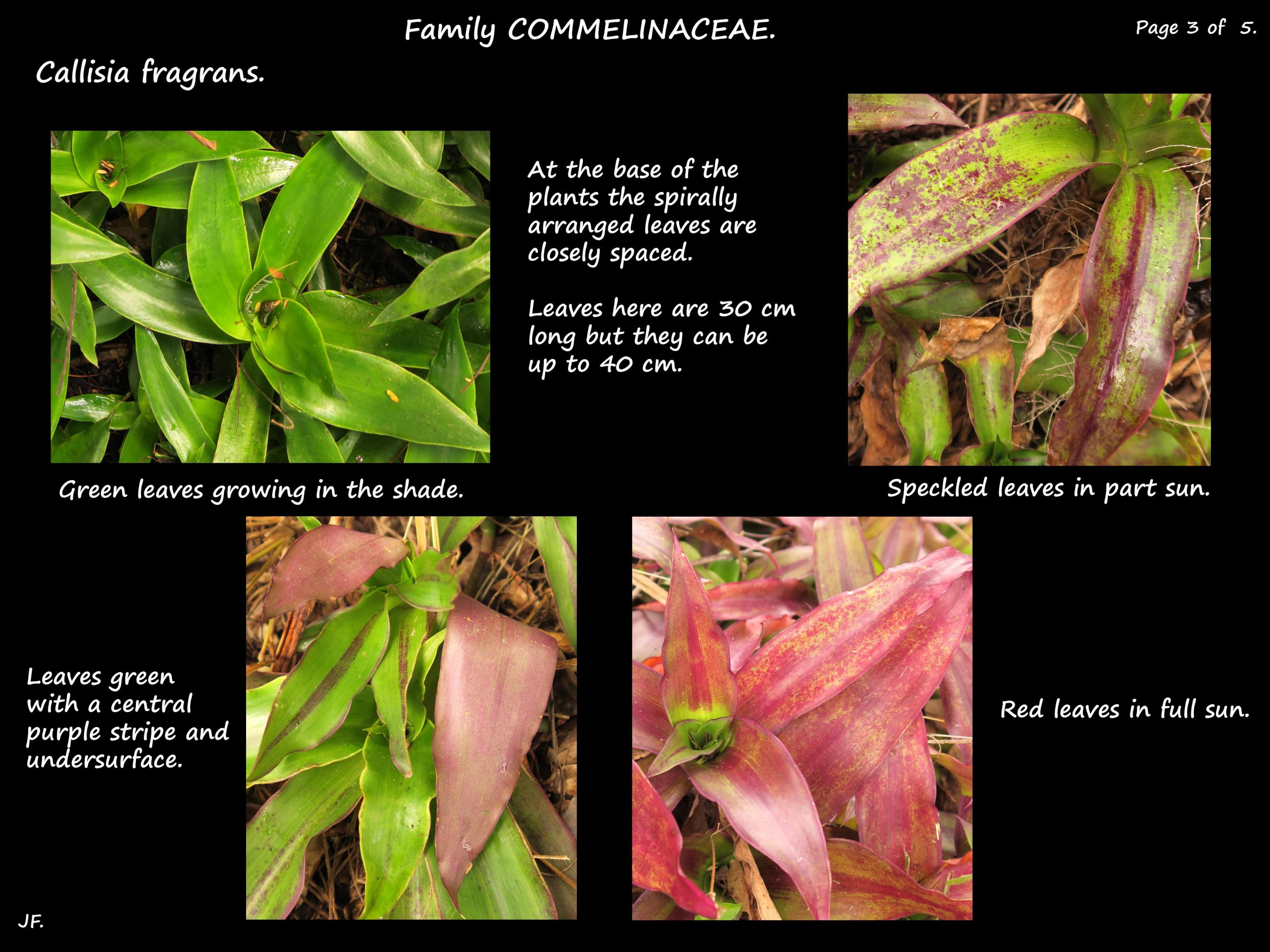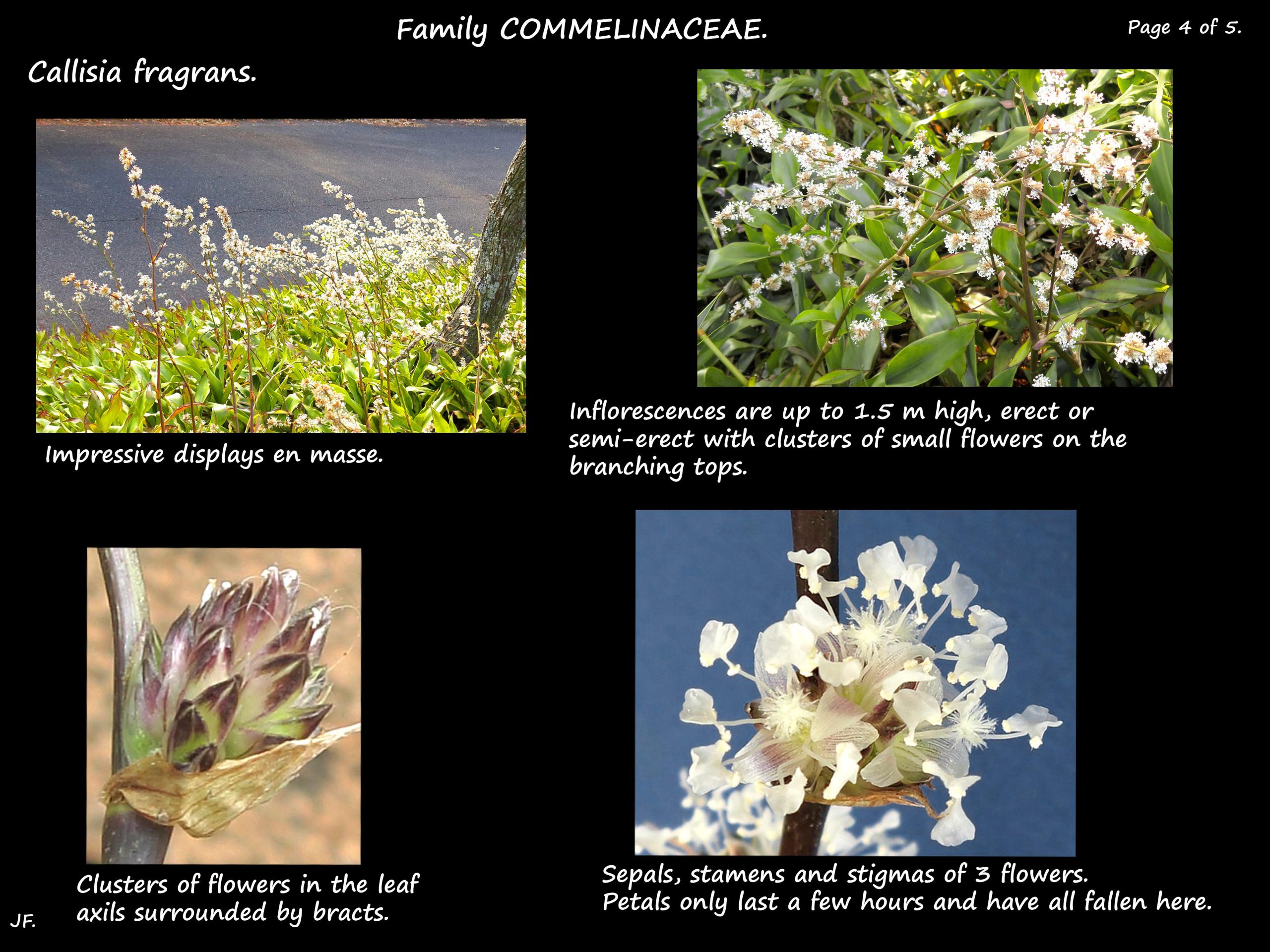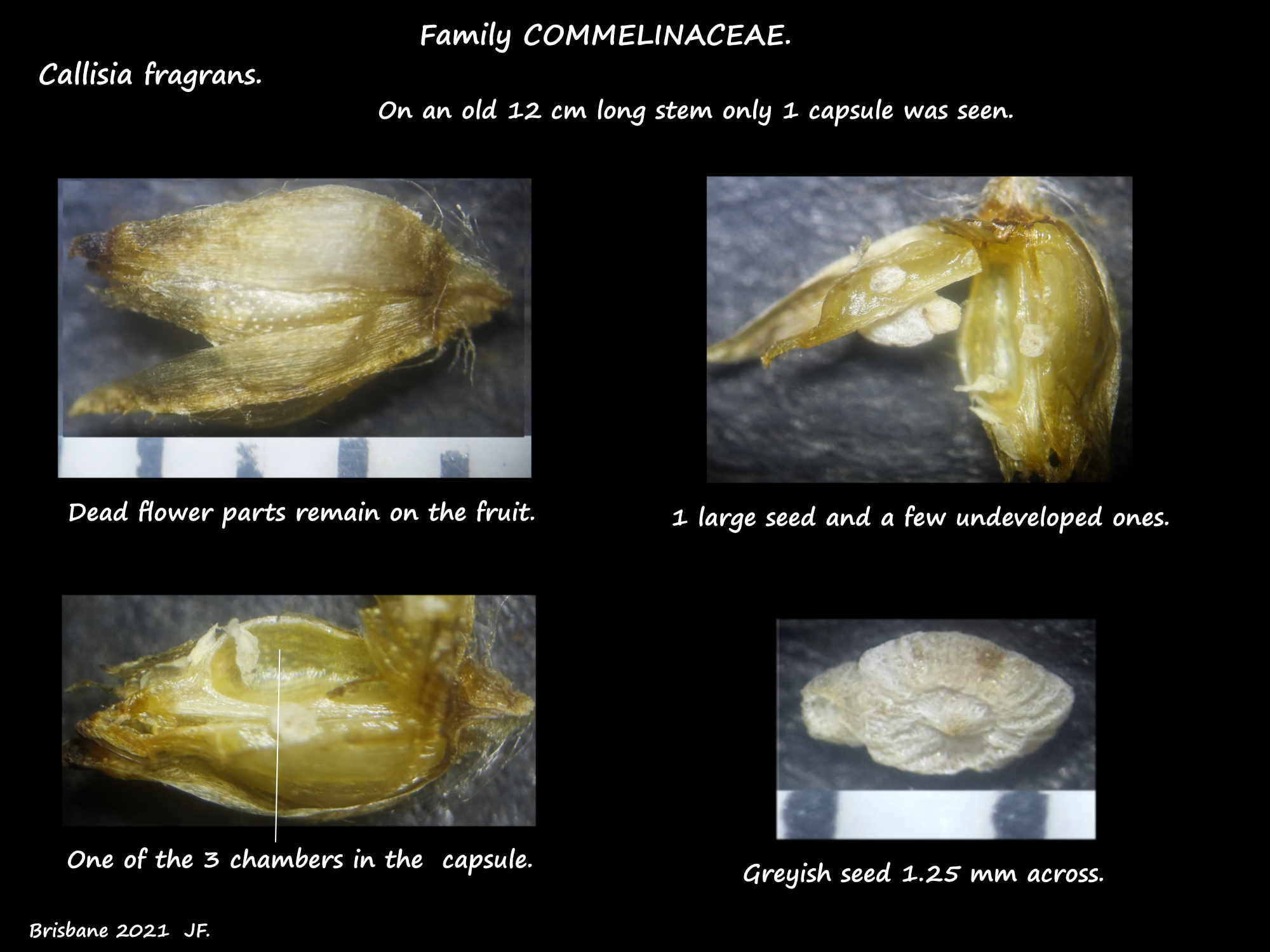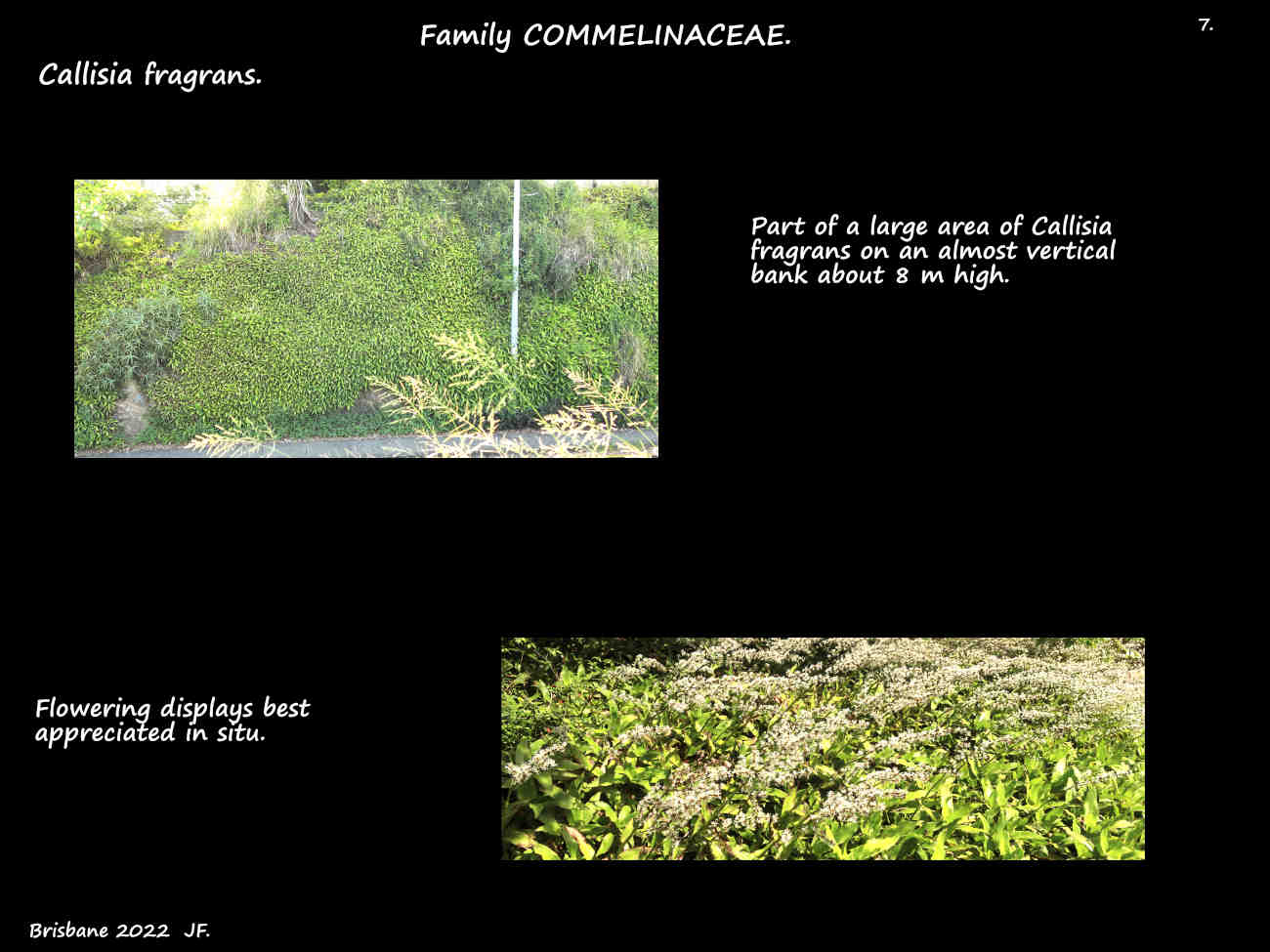Callisia fragrans.
Family Commelinaceae.
Naturalised in some areas of Queensland it is known as the Purple succulent.
Plants form dense clusters.
The thick, fleshy stems develop into long runners that enable the plant to spread quickly.
Roots grow from the nodes.
The leaves are spirally arranged, crowded at the base and spread out on the runners.
The leaf bases form short sheaths on the stems.
The fleshy leaves, up to 40 cm long and 10 cm wide, are oblong or lanceolate.
They are green in the shade but become purplish in the sun.
The lower surface is green or purplish.
Inflorescences, on stalks up to 1.5 m high, are erect or semi-erect.
Many small flowers are clustered near the ends of the branching stalks.
Individual flowers have almost no stalk and there is a bract up to 15 mm long.
The 3 sepals, about 5 mm long, are whitish or almost transparent.
The 3 round, white, elongated petals only last a few hours.
The 6 large stamens are the most prominent feature of the flowers.
Each anther has a wide, white petal-like appendage between the pollen sacs.
The stigma on the ovary is long.
The fruit are small capsules but most reproduction is vegetative.
J.F.

